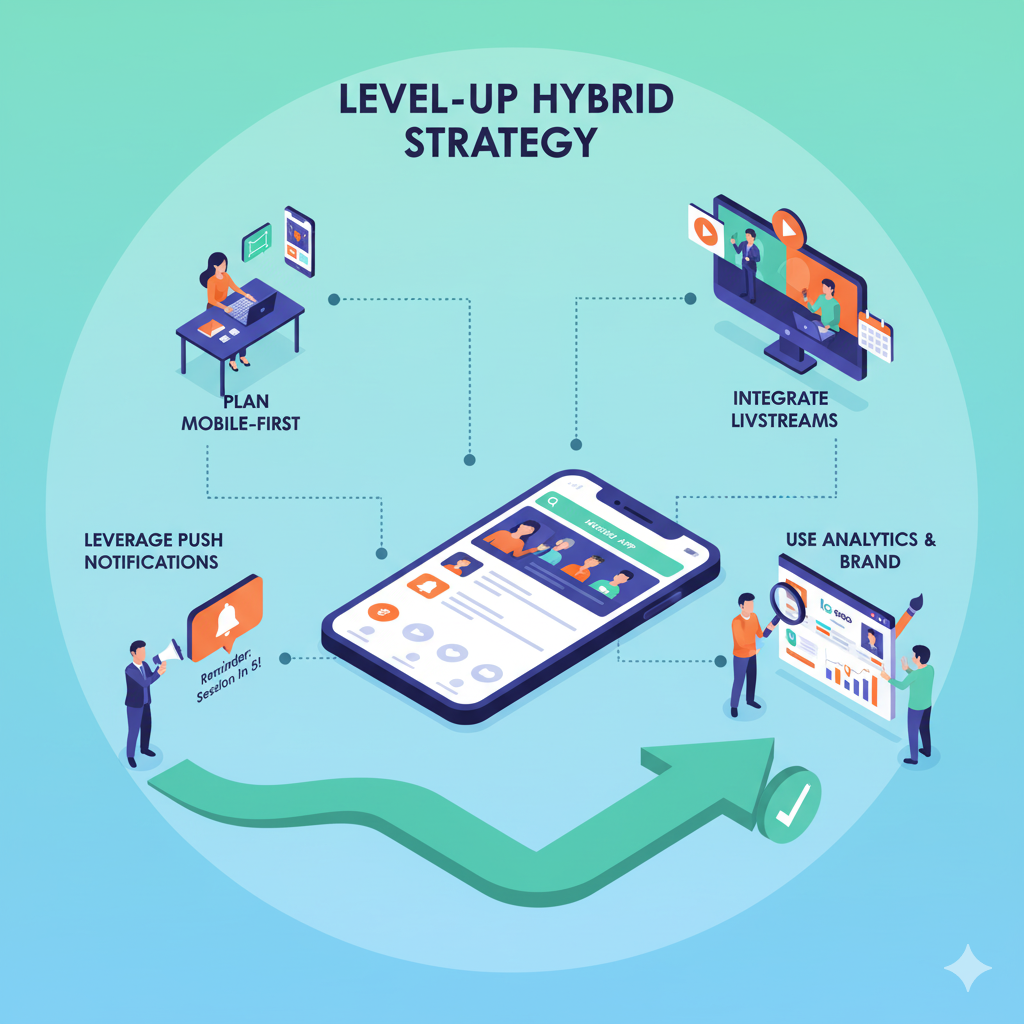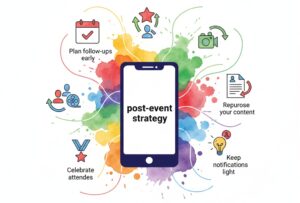Why do hybrid events still feel so complicated?
Let’s be honest—running an event that blends in-person energy with online accessibility can feel like juggling chainsaws. You’ve got attendees in the room, attendees at home, and a team trying to make both groups feel equally connected. That’s where a mobile event app becomes the glue holding it all together.
Hybrid events aren’t going anywhere. A recent surge in digital participation means audiences expect flexibility. They want to switch between in-person and virtual experiences without missing content or networking opportunities. Event planners, on the other hand, need tools that cut costs, save time, and make coordination painless.
At Yapp, we’ve seen hybrid events succeed when organizers rethink communication—not as a broadcast, but as a living, interactive experience. That’s exactly what our platform was designed for.
“We tell planners all the time: stop thinking of your app as a schedule. Think of it as your event’s central nervous system.” — Yapp Product Team
The London Screenwriters’ Festival (LSF) proved how powerful that mindset can be. When the pandemic halted their live, three-day festival, LSF used Yapp to pivot into a month-long hybrid of livestreams and on-demand sessions—keeping over 1,000 attendees engaged from their phones.
Learn more about mobile event apps.
What makes hybrid event management easier with mobile apps?
Hybrid event success comes down to flexibility and access. A mobile event app can help you handle both—without breaking your budget or your team.
Here’s how Yapp users pull it off:
- Real-time updates keep everyone aligned.
When the schedule shifts or sessions move online, instant push notifications keep both audiences informed. Schools That Can used Yapp’s unlimited notifications to streamline communication during its national forum, earning a 96% satisfaction rate from attendees. - Centralized content builds trust.
Instead of juggling email threads and printouts, planners can house livestream links, venue maps, and speaker bios in one accessible hub. - Two-way engagement bridges the gap.
Attendees can post photos, comments, and questions directly in the app—creating shared moments whether they’re on-site or online. - Sponsors and partners shine equally.
Digital banners, profiles, and interactive booths give partners visibility across physical and virtual audiences. - Cost efficiency adds up fast.
Uncubed’s team saved more than $100,000 per year using Yapp to replace printed materials and expensive custom software.
“It’s exciting to watch teams realize they can deliver a professional hybrid experience without an IT department,” said one of our Yapp support specialists. “The magic is in the no-code simplicity.”
The best hybrid events feel like one seamless experience—because behind the scenes, their tech stack is unified. A single app connects schedules, notifications, sponsors, and networking, while giving organizers instant visibility into how people interact. That kind of insight makes planning the next event even easier.
And when you combine data-driven decisions with personalized attendee experiences, you don’t just meet expectations—you redefine them.
We’ve also seen how these apps boost confidence. One Yapp project manager shared, “Clients who were hesitant about hybrid events often call us after their first success saying, ‘We’ll never go back.’ The app makes it feel effortless—and that’s the point.”
How can planners use mobile event apps to level up hybrid strategy?
Once you’ve got the right tools, the key is using them strategically. Here’s what our event specialists recommend:
- Plan mobile-first.
Start by designing your content for the app experience. Build session tracks, speaker lists, and feedback forms that work on every device. - Integrate livestreams and on-demand access.
Let attendees catch missed sessions right from the app. It extends event life and maximizes content ROI. - Leverage push notifications for connection.
Short, timely messages can drive engagement far better than emails. - Use analytics to measure hybrid success.
Track feature usage and engagement data from both audiences to refine your next event. - Create a branded experience.
Add logos, themes, and sponsor recognition to keep your hybrid event cohesive—no matter where attendees log in.
Our team often works with organizers who think hybrid is twice the work. Once they experience how Yapp unifies both sides, that perception flips fast.
“I’ve seen planners go from spreadsheets and chaos to fully mobile coordination in hours,” said a Yapp Customer Success Manager. “Once they see attendees posting photos and chatting in real time, it’s clear—a hybrid doesn’t divide people; it connects them better.”
Think of it this way: hybrid events aren’t a temporary fix. They’re the future of accessibility. When you give attendees the freedom to participate however they want—and still feel included—you’re not just managing an event. You’re building a community.
At Yapp, we believe hybrid events are about expanding opportunity, not complicating logistics. With a few smart moves, you can transform what feels like chaos into clarity.
“When we watch clients go from paper schedules to live app-driven engagement, it’s night and day. The hybrid format isn’t a hurdle anymore—it’s an advantage.” — Yapp Customer Success TeamReady to make your next event better? Start your trial now!










